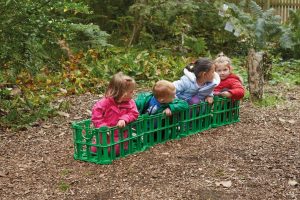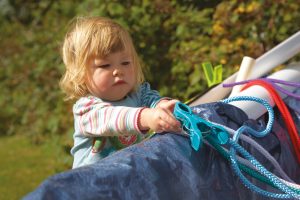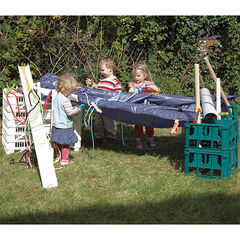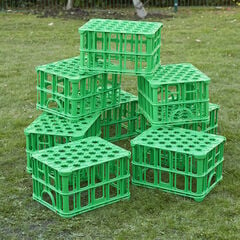By Ben Kingston-Hughes – Managing Director of Inspired Children
Why loose parts play?
The topic of Loose Parts Play has become very popular over the last few years. The reason the subject has become so popular is that people are starting to realise that Loose parts play, the ability to freely explore and create within an enriched environment, is something very precious. It is also something that for many children is now absent.
I could talk at length about the benefits of Loose Parts Play for children’s brain development, mental health and resilience. As well as confidence, leadership skills, self-awareness, fine and gross motor skills and potentially even life expectancy!
Instead, I am going to talk about something so precious it is the one thing that makes us uniquely human.
Imagination.
If a child looks at a group of random loose parts resources and sees endless possibilities, and has the freedom to explore those possibilities, they create a virtual firework display of neurological activity in their brain. This unlocks creative potential in a way that is profoundly important. Being joyfully creative, spontaneous and exploring the flexibility inherent in a loose parts environment are key factors in developing imagination, innovation and divergent thinking. The world’s greatest thinkers, the individuals who have pushed the boundaries of their subject and potentially changed the world, share this wonderful ability to think creatively and come up with unique solutions to problems.
Loose parts play is therefore not just vital for our children but potentially to our species as a whole! If Loose Parts Play is absent from our children’s lives where is the next generation of world changers going to come from?
“Dragon’s Don’t Eat Peas!”
One of my cousins (not a real cousin but a friend of family type cousin) loved to pretend she was a dragon. She actually seemed to believe she really was a dragon, spending hours in her garden making “Dragon nests” out of old sticks and bedsheets. I will never forget when being told by her parents to eat her peas she shouted, “DRAGONS DON’T EAT PEAS!”. To be honest we all thought she was a bit strange. She is now a successful writer. Maybe she was a little strange. But clearly her imagination has been crucial to her success in adult life and this is intrinsically linked to the loose parts play and imagination she experienced in childhood.
Or maybe she really was a dragon all along!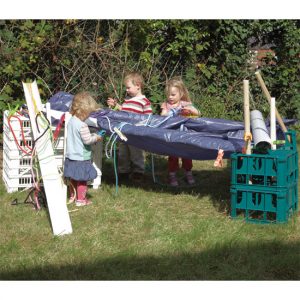
Thank you to Ben Kingston-Hughes for writing this blog. Click here to find more of Ben’s work: //www.iinspired.org.uk/
Go to the TTS loose parts play page to find more inspiration:
//www.tts-group.co.uk/early-years/loose-parts/


